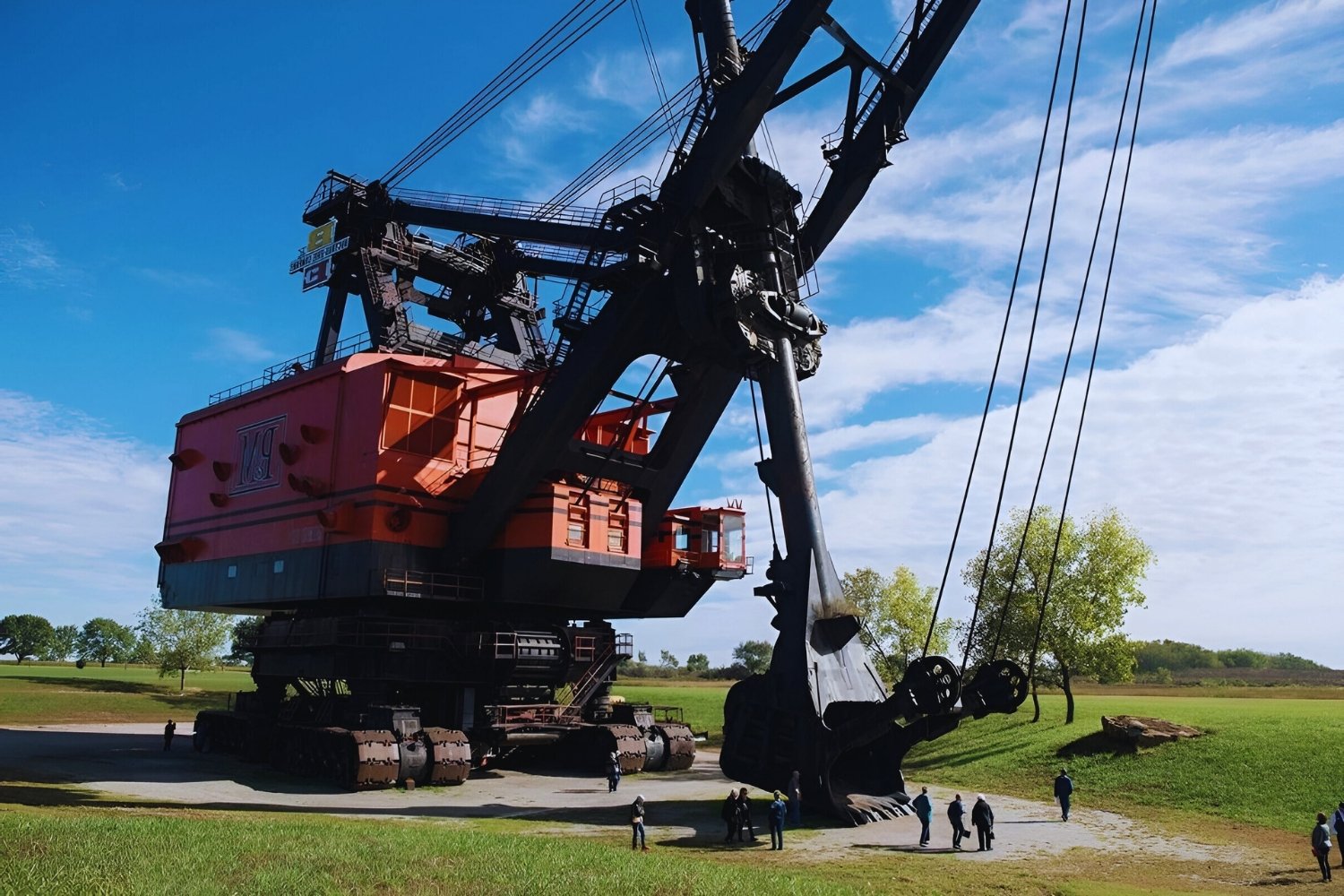Big Brutus: Discovering the Mighty Coal Shovel’s Legacy

Ever seen a giant machine that could scoop up a house? Meet Big Brutus, the massive coal shovel that once roamed the coal fields of Kansas. Standing 16 stories tall, this engineering marvel was built in the 1960s to dig up coal with its enormous bucket. Though retired now, Big Brutus remains a symbol of the region's rich mining history. Today, it serves as a museum, drawing visitors eager to witness its sheer size and learn about its past. Whether you're a history buff or just curious about big machines, Big Brutus offers a unique glimpse into the world of mining.
Big Brutus: A Giant Among Machines
Big Brutus, a colossal coal shovel, stands as a testament to the industrial might of the past. This engineering marvel, located in West Mineral, Kansas, offers a glimpse into the history of coal mining. Standing at 160 feet tall and weighing 11 million pounds, Big Brutus is the largest electric shovel still in existence. Let's explore some fascinating places where you can learn more about this giant and its legacy.
1. Big Brutus Museum
The Big Brutus Museum is the perfect starting point for anyone curious about this massive machine. Here, visitors can explore exhibits detailing the history of coal mining and the role Big Brutus played in it. You can even climb inside the shovel's cab for a firsthand look at the controls miners used. The museum offers a unique opportunity to understand the scale and impact of this engineering wonder.
2. West Mineral, Kansas
West Mineral, the small town where Big Brutus resides, is a charming place with a rich mining history. While visiting, take a stroll through the town to see remnants of its coal mining past. The community is proud of its heritage, and you'll find friendly locals eager to share stories about the days when Big Brutus was in operation.
3. Pittsburg State University
Pittsburg State University, located nearby, is home to the Kansas Technology Center. This center offers educational programs related to engineering and technology, including mining. Visiting the university provides an opportunity to learn about modern advancements in mining technology and how they compare to the era of Big Brutus.
4. Crawford State Park
Crawford State Park, a short drive from Big Brutus, offers a beautiful natural setting for outdoor enthusiasts. The park features hiking trails, fishing spots, and camping areas. After exploring the industrial history of Big Brutus, enjoy the tranquility of nature and reflect on the balance between industry and the environment.
5. Galena Mining and Historical Museum
Located in Galena, Kansas, this museum offers a broader perspective on the region's mining history. With exhibits on lead and zinc mining, visitors can gain a deeper understanding of the area's industrial past. The museum complements the story of Big Brutus by showcasing the diverse mining activities that shaped the region.
6. Route 66
While in the area, don't miss the chance to travel along Route 66, the iconic highway that passes through Kansas. This historic road offers a nostalgic journey through America's heartland, with quirky roadside attractions and charming small towns. It's a perfect way to round out your visit to Big Brutus and the surrounding region.
Reflecting on Big Brutus' Impact
Big Brutus stands as a monument to the coal mining era, capturing the imagination of visitors with its sheer size and historical significance. This massive machine, once a powerhouse in the mining industry, now serves as a reminder of the region's industrial past. Touring Big Brutus offers a unique glimpse into the challenges and triumphs of mining communities, highlighting the ingenuity and determination of those who worked tirelessly in the mines. As you walk through the museum, the stories of miners and their families come to life, providing a deeper understanding of their contributions. Visiting this iconic landmark not only educates but also inspires appreciation for the advancements in technology and safety that have since transformed the industry. Big Brutus remains a testament to human innovation and the enduring spirit of those who shaped the landscape of southeast Kansas.

